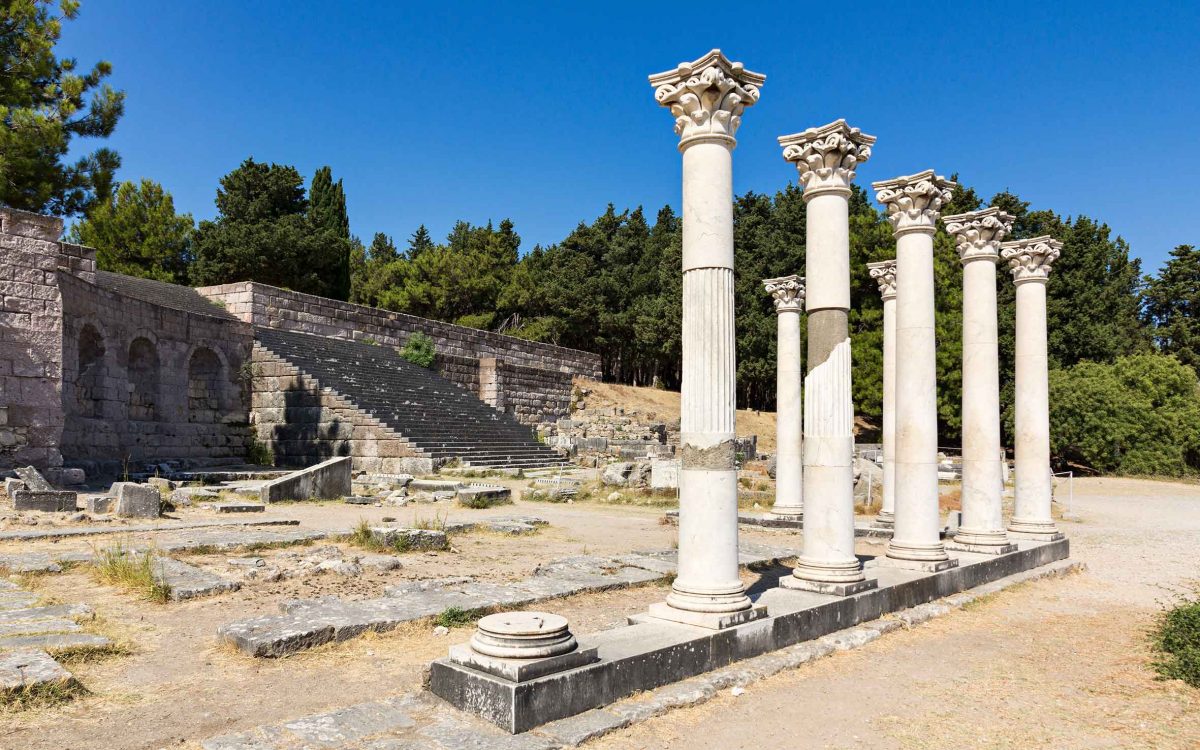The Asclepeion of Kos was an ancient healing sanctuary associated with the father of medicine, Hippocrates (c. 460–370 BC), and dedicated to the first doctor-demigod in Greek mythology, Asclepius.
Located on the slope of a densely forested hill with panoramic views of the opposite coast of Asia Minor, the sanctuary is three kilometers northwest of the city of Kos, connected in antiquity by a processional road. The peace and tranquility of the surrounding environment played a significant role in the treatment of patients at the sanctuary, which included psychological therapy and hypnosis.
The majority of the existing ruins date to the Hellenistic period (323–31 BC), built around an earlier altar to Kyparissios Apollo. The most prominent buildings include the Temple of Asclepius in the Ionian style, a later Doric temple, also dedicated to Asclepius, and a monumental propylaea (entrance-way).
According to historical writers, the sanctuary was adorned with numerous votive offerings, including a sculpture of the goddess Aphrodite by the renowned 4th century BC sculptor Praxiteles. Various surgical instruments and votive figurines were found during excavations in the first half of the 20th century.
The sanctuary also hosted the games of the Great Asclepia, a quinquennial festival that involved a sacred truce between city-states across the Greek world.












